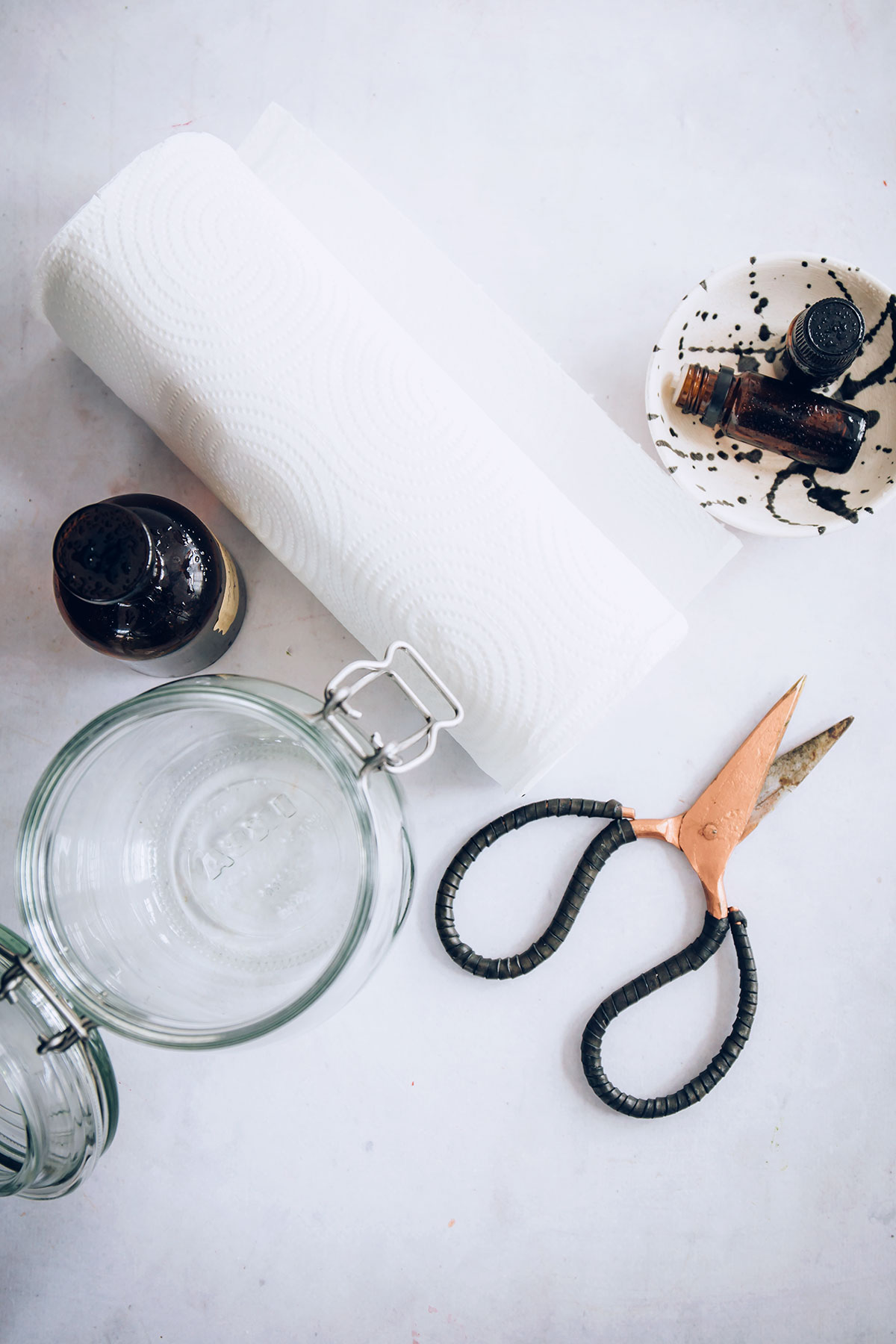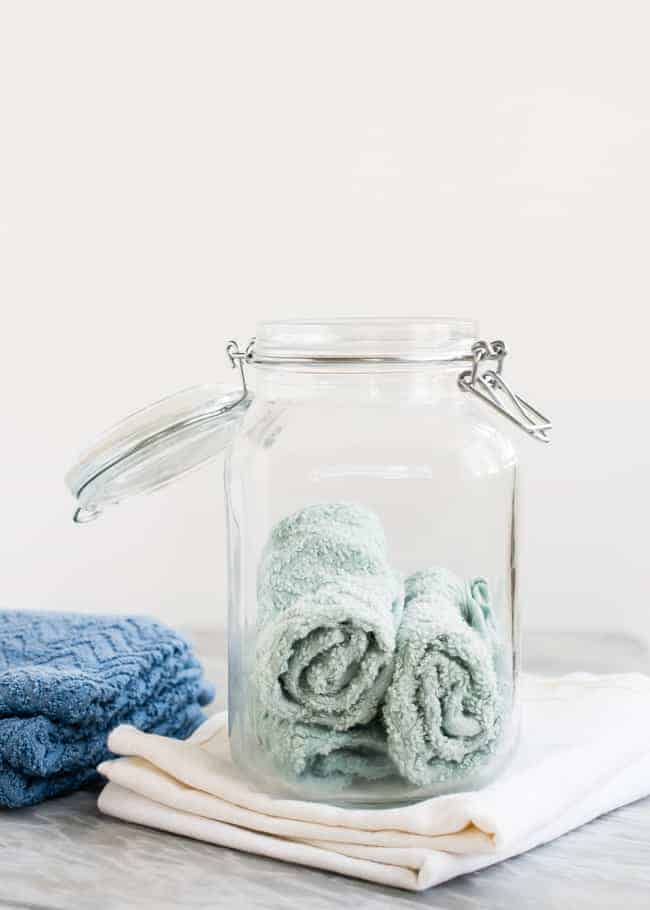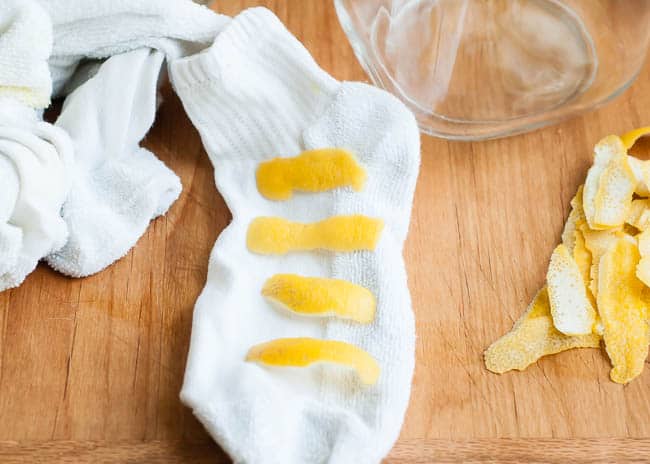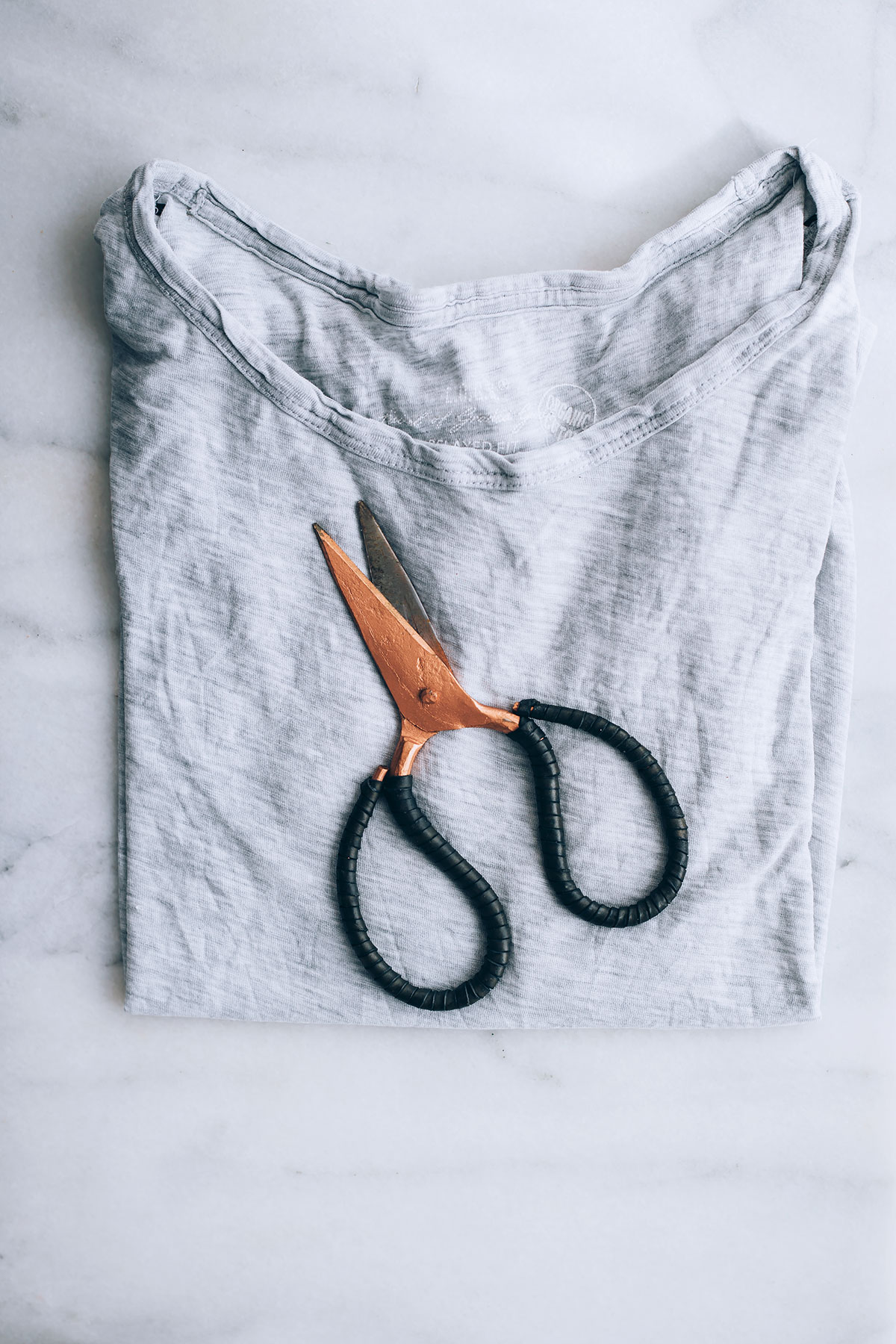I grew up in a home where we used only washable/reusable cloths in the kitchen and dining room, yet once I moved out on my own I quickly fell under the spell of the ease and disposability of paper towels. Fast-forward to the present day where I know more about the wastefulness and environmental impact of single-use items, I now find myself returning to my old-school roots, but with a few modern hacks.
If you’ve been wondering how to ditch paper towels and find a more sustainable and affordable alternative, here’s how to take the plunge.

1. Pay attention to current usage
Identify the various ways in which you currently use your paper towels, for example:
- wiping down kitchen surfaces, sinks, and appliances
- cleaning glass/windows
- covering food
- art projects/cleanup
- drying food
- absorbing grease from fried food
- cleaning up big messes (pets, children, stains)
- mopping up liquid spills
- napkins at the dinner table, or in packed lunches
- cleaning or drying dishes
- wiping food scraps off of plates before the wash
- wrapping/packing dishes
2. Out of sight, out of mind
You’re probably used to having a roll of paper towels sitting out on the counter. Don’t! My family’s usage dropped dramatically as soon as I hid the paper towel roll under the sink. Now I have to remember that we have paper towels instead of having it staring me in the face.
Plus, if you have family members (like my hubby) who have mini freakouts at any green cleaning changes, you’ll still have paper towels on hand as backup. This seems to relieve a lot of germ-phobe anxiety.
3. Find the right alternatives
Find the right alternatives to meet your current paper towel needs, and decide how many you’ll require. Some of our favorite options:
Microfiber cloths
These are ultra-soft cloths that can be used for anything requiring a lot of absorbency. They are inexpensive, easy to clean, and can be folded and tucked in a drawer or on the counter for ease of use.
Use for: cleaning counters, drying surfaces, mopping up spills, dusting.
Recommended number: 12
Huck towels
Found most often in hospital settings, these ultra-absorbent cloths are also thin and lint-free which makes them a great choice any time you want to work in contact with food. These will be used more often than the microfibre cloths for most kitchens.
For cleaning up more bacterial messes (raw chicken, etc.), first wipe up the mess with a huck towel, toss it in the wash bag, then give the counter a cleaning with a new cloth and your favorite all-natural cleaning product.
Use for: spills, cleaning, drying food, absorbing grease from fried foods, cleaning and drying glass, wiping food scraps from plates before dish washing.
Recommended number: 24-36
Cloth napkins
If you’re used to using paper napkins or paper towels at mealtime, this might be the most revolutionary shift. Choose napkins that are natural cotton, and remember that darker colors will be better at hiding food stains in the long run. You can even make your own from fabric scraps.
Use for: dinner table napkins, in packed lunches, for picnics.
Recommended number: Depending on how many people are in the household, picking up 24-36 napkins will allow for multiple lunch/dinner cycles between washes.
Biodegradable cellulose dish cloths
Whether you use paper towels for your dishes or disposable sponges/J-cloths, making the switch to a cellulose cloth (sometimes called a SKOY cloth/sponge) is a more sustainable choice. Be sure to let them air dry in between uses to prevent bacterial growth. Each cloth replaces the equivalent of 15 rolls of paper towels and is fully biodegradable, breaking down completely in only 5 weeks.
Use for: washing dishes, the stove, the fridge, and the sink.
Recommended number: 4
Tea towels
I am a big fan of tea towels with fun prints and colorful dyes, and use them to add some punch to my kitchen. Reserve a few of your nicest towels for hand-drying (these are the ones you’d display folded over the oven or dishwasher handle), and have a few more utilitarian ones folded in a drawer that you can use to dry dishes.
Use for: drying hands, drying glasses and dishes, polishing cutlery.
Recommended number: 2-4 hand towels, 2-4 for heavier use.
Rags
Rags make excellent reusable wipes! If you don’t have any old sheets or t-shirts that you are willing to cut down to size to use for art heavy duty clean-up, head out to your local second-hand thrift store and pick up a few there. Buying second hand and reusing fabrics that are already out in the world is a sustainable, economical, and environmentally-friendly choice.
Use for: art projects, pet and baby messes, mopping up staining liquids.
Recommended number: 12, and top up when you have to toss them.
4. Create a laundry system
Finding the right place for both your clean and your dirty towels is going to make all the difference. If you find it’s as easy as reaching for paper, you’re more likely to stick with the switch.
I keep a mesh wash bag hooked on the inside of the kitchen cabinet containing my garbage, and each time a cloth gets used, I simply toss it in as I would be tossing out a paper towel. Once the bag is full, I throw it all in the laundry, while the second mesh bag gets hooked up and brought into use.
And there’s no rule that you have to wash cloth napkins after just once use. If they’re not dirty, fold and use them again.
Let your greasy towels soak in a mix of water and baking soda to cut through the oil before washing.
5. Don’t forget to reuse
You probably already have a few of these handy paper towel alternatives around the house.
Newspapers
For dirty windows, spray the panes of glass down with some white vinegar, and use crumpled up newspaper to wipe them clean—then toss into your compost bin. Newspaper can also be used to wrap up glasses or other breakables if you need to pack them up, spread out on countertops if you’ll be working with messy foods, or as drop-sheets under messy arts and crafts. You can also cover containers of food with newspaper if you’re used to doing so with paper towels!
Socks
Instead of tossing orphan socks turn them into furniture dusters. Slip a sock over your hand, and it’s easy as can be to wipe the dust away. I turn them inside out for better dust-grabbing.
T-shirts
Old t-shirts can be turned into all kinds of handy plastic alternatives, like produce bags or reusable kitchen wipes.
With just a few initial investments and some foresight on storage and ease of availability, making the switch from paper towels to washable/reusable cloths can be simple and just as effective. And you can feel good knowing that in the long run you’ll not only be helping out the environment, you’ll be saving money as well.
16


Leave a Reply